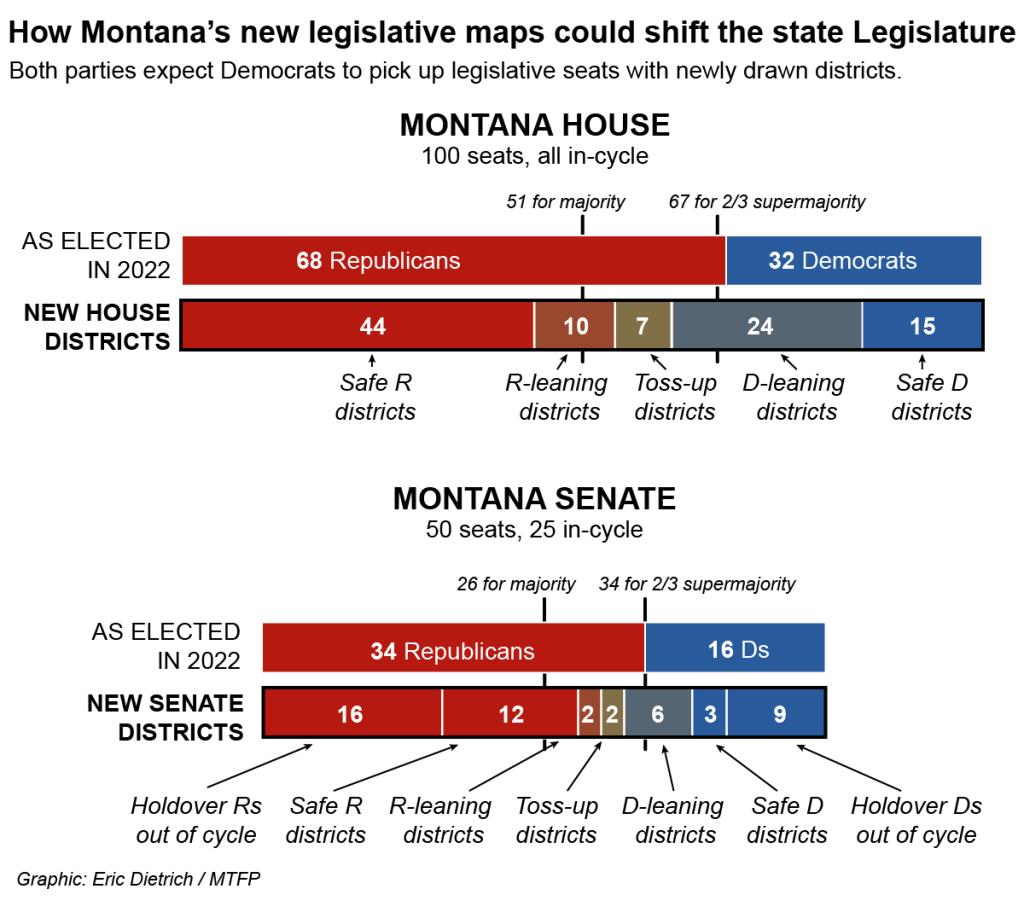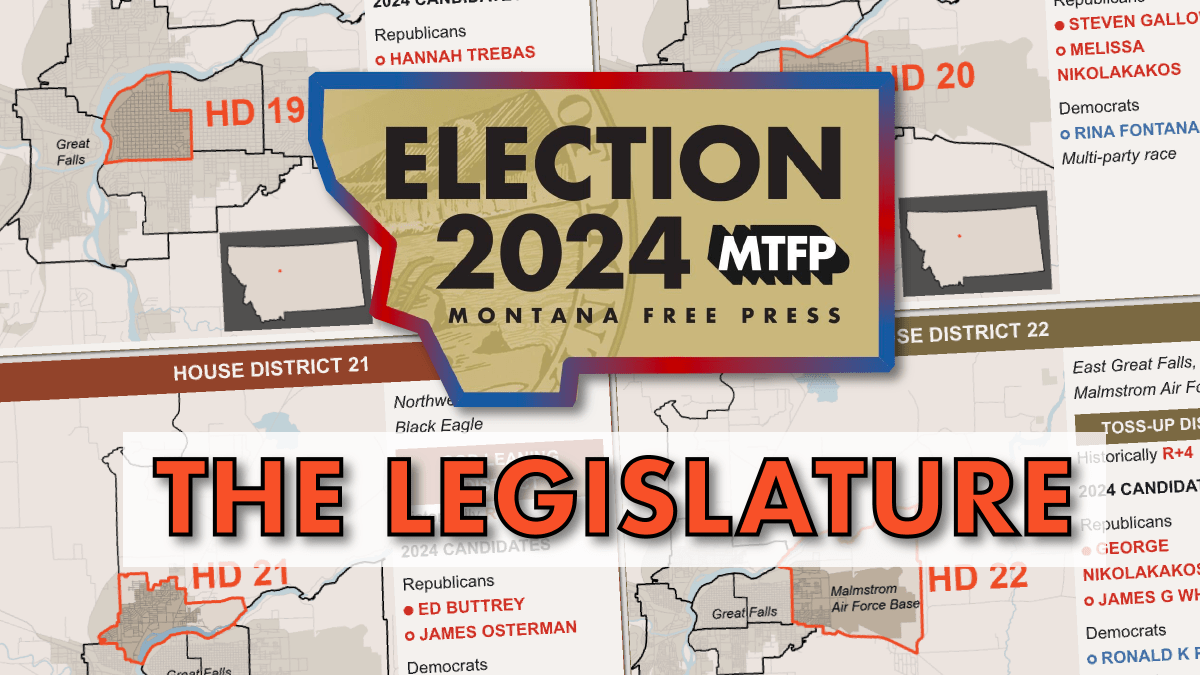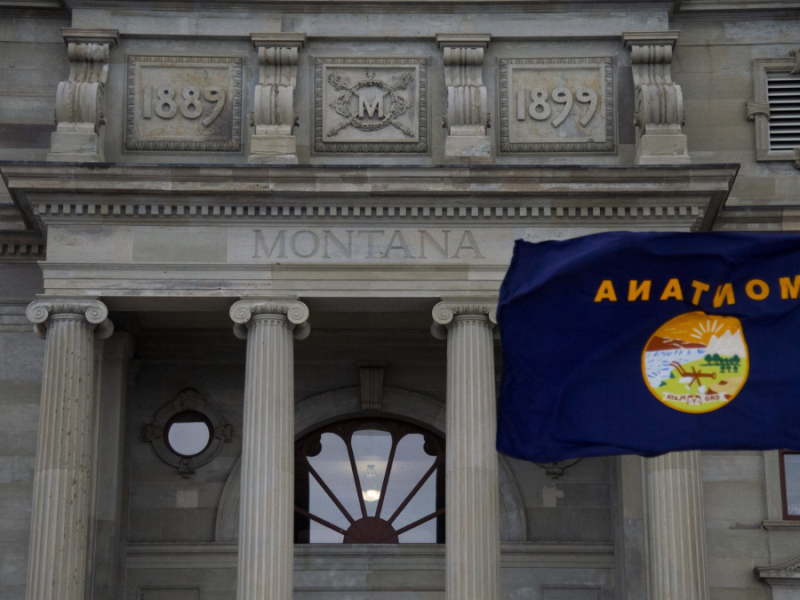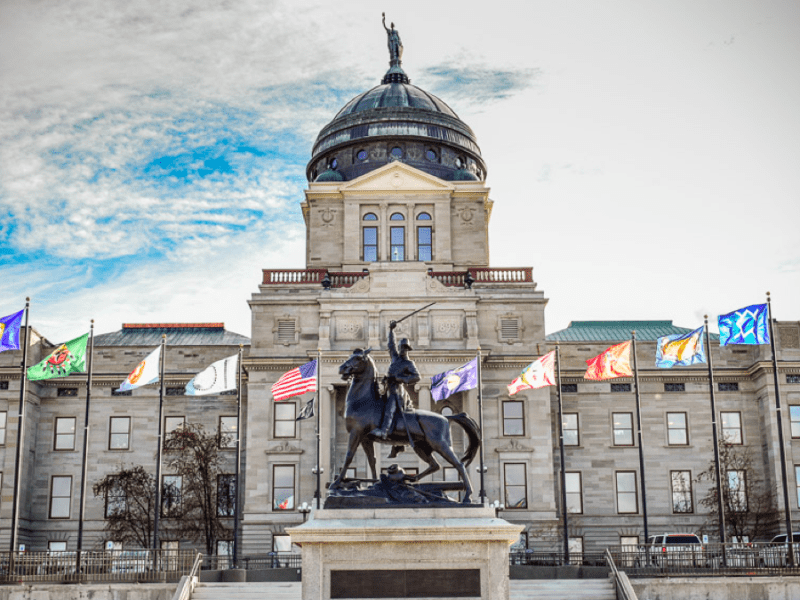Beleaguered Montana Democrats are hoping this year’s legislative election cycle, the first conducted with new state House and Senate maps drawn following the 2020 census, might give them a chance to edge into the historic Republican supermajority that shaped the politics of the 2023 Montana Legislature.
The minority party, which currently holds 32 of 100 House seats and 16 of 50 Senate seats, is unlikely to win outright majorities in either chamber in the November general election. However, even a handful of additional seats would give Democrats more negotiating leverage on issues where occasionally fractious Montana Republicans don’t maintain a united front.
Also key to the political dynamics of the 2025 Legislature will be the outcome of Republican primary elections in June, when voters will in some cases choose between hardline conservatives and comparatively moderate Republicans who are often more inclined to negotiate compromises across the aisle.
Leaders from both major parties said this week that they’re excited about the candidates they’re putting before voters this year as the state’s elections calendar rolled through the formal deadline for candidate filing Monday. Both also agreed that the new district maps are likely to give Democrats the chance to win a few additional seats.

Rep. Kim Abbott, D-Helena, and Sen. Pat Flowers, D-Belgrade, the party’s respective House and Senate minority leaders, said in a press conference Monday that they’re optimistic Democrats will be able to pick up 8 to 10 House seats and 3 to 5 Senate seats. If those wins materialize, they would essentially roll back the electoral gains Republicans have made over the two election cycles since the onset of the COVID-19 pandemic.
Sen. Greg Hertz, the Polson Republican who chairs the state GOP’s legislative campaign committee, echoed that assessment in an interview Monday.
“There’s a good probability that we’ll probably lose a few seats,” he said. “But there’s no doubt we’ll retain control of the legislative branch, and probably with some good numbers.”
Hertz also said he believes “gerrymandering” of the new maps, drawn by the state’s independent districting commission, will result in a political landscape where fewer districts are competitive for Republican candidates.
“There are just districts that Republicans can no longer win,” Hertz said.
The new legislative maps counteract the demographic tendency for Democratic voters to pack themselves into dense urban areas by incorporating pinwheel-style districts around Missoula, Bozeman and Helena that combine slices of those cities’ overwhelmingly liberal core neighborhoods with suburbs and exurbs where residents typically skew more conservative. If historic precinct-level voting patterns predict the future, the new pinwheel districts will be generally Democratic-leaning.
Had the districting commission instead drawn more compact districts that separated urban neighborhoods from suburbs, the resulting maps would have tended to produce a few overwhelmingly Democratic districts while leaving suburban and exurban districts leaning farther toward Republicans.
The prior legislative maps, which were used from 2014 to 2023, tended to produce election results in which Republicans were slightly overrepresented in the Legislature relative to the party’s overall statewide vote share. In the 2022 election cycle, for example, Republicans received 64% of the votes cast in Montana House races statewide, but won 68% of the body’s 100 seats, according to a Montana Free Press analysis. Democrats, in comparison, received 35% of votes cast but won only 32% of seats. (The remaining 1% of the vote went to third-party or independent candidates).
During Monday’s Democratic press conference, Abbott defended the new maps on that basis, saying its districts will tend to produce a Legislature that better reflects the state’s overall political character.
“They give people who are Democrats the chance at having proportional representation in the state Legislature,” Abbott said. “Gerrymandering means you’re minimizing the representation of a community that should have representation.”
In a statement Tuesday, state GOP Chairman Don “K” Kaltschmidt reiterated the gerrymandering critique of the new maps and noted that Republicans had successfully recruited candidates for every in-cycle seat this year.
“While the Montana Democrats gerrymandered legislative districts to try and guarantee wins for their own party, we worked hard to recruit strong, qualified candidates in every single district across the state,” Kaltschmidt said.
The state Republican party considered bringing litigation over the new maps, but ultimately decided not to challenge them with a lawsuit.
Even a small shift in the balance of power in the Legislature could have an outsize impact on the policy that comes out of the state Capitol, where single-digit vote margins are common with notable legislation. Among the many issues likely to be debated on the campaign trail and into the 2025 Legislature include potential action on housing affordability, rising property taxes and the budget crises facing many Montana school districts.
Montana’s expanded Medicaid program, which currently provides publicly funded health coverage to about 87,000 adult Montanans, is also up for renewal next year. First authorized in Montana by the 2015 Legislature using a provision of the 2010 federal Affordable Care Act, Medicaid expansion has been a recurring political football in the Legislature. Most recently, it was narrowly reauthorized with support from Democrats and some Republicans in 2019, passing muster in the Senate by a single vote.
rELATED
Which party controlled Montana politics, year by year?
A couple of years back, longtime Montana reporter Chuck Johnson shared with MTFP a spreadsheet he’d compiled detailing which political party had controlled the Montana House, Senate and governorship year-by-year over the course of the state’s history. Chuck being Chuck, it included figures stretching back nearly to statehood in 1889, painstakingly tallied and color-coded.
Explaining the why and the where of Montana’s new legislative districts
The Montana Districting and Apportionment Commission finalized new state legislative district lines with commission chair Maylinn Smith breaking a tie in favor of the panel’s Democrats.
Flowers said during Monday’s Democratic press conference that he doubts the 2019 expansion measure, passed when Democrats held 20 Senate seats instead of their current 16, would have made it through the most recent Legislature. More broadly, he said, being within a handful of seats of the 26-vote majority necessary to pass most legislation in the Senate would make it much easier for Democrats to build winning coalitions with Republicans.
“When you go from needing 10 votes to win the day on any particular bill from needing seven or six — that’s quite a bit different,” Flowers said.
WHO’S IN THE RUNNING
In all, 310 Montanans have filed to take their swing at legislative offices as Republicans, Democrats or Libertarians, setting up contested multi-party elections in all but 12 of the state’s 100 House districts and all but four of 25 in-cycle Senate districts. (The other 25 senators were elected to four-year terms in 2022 and were assigned new holdover districts for the second half of their terms by the districting commission.)
Another six House and four Senate districts have multiple Republicans filed but no Democratic or Libertarian candidates, meaning voters will pick their legislator in the June primary rather than the November general election.
Notable Republican-side primary contests include Glendive’s House District 33, where Rep. Brandon Ler of Savage, a hardliner who represented a Sidney-centered district under the old House map, is facing a challenge from Dawson Community College board member Kathy Hoiland. In northeast Kalispell’s House District 8, freshman Rep. Tony Brockman is facing a challenger, Lukas Schubert, who is endorsed by hardline Speaker of the House Matt Regier.
In House District 68, which includes parts of Belgrade and the Amsterdam-Churchill area of west Bozeman, two current Republican legislators, Rep. Jennifer Carlson and Rep. Caleb Hinkle, are facing a three-way primary that also includes Scott Sales, a former Montana Senate president who until recently served as Gov. Greg Gianforte’s state lottery director.
Several current legislators are also competing with one another on the Senate side. In the Bitterroot Valley south of Missoula, Rep. Wayne Rusk is mounting a challenge to Montana Freedom Caucus leader Sen. Theresa Manzella. In Senate District 13, which surrounds Great Falls from Cascade to Big Sandy, Great Falls Rep. Lola Sheldon-Galloway, the vice chair of the state Republican party, is facing off against Rep. Josh Kassmier, a Fort Benton lawmaker who carried several of the governor’s priority bills in the 2023 Legislature.
On the Democratic side, current Rep. Jonathan Windy Boy and former Rep. Bridget Smith are competing to represent Senate District 16, which extends from the Rocky Boy’s Reservation through Wolf Point and Poplar in northeast Montana. Current Rep. Sharon Stewart-Peregoy of Crow Agency and former Rep. Rae Peppers of Lame Deer are also vying to represent Senate District 21, which spans the Crow and Northern Cheyenne Reservations southeast of Billings.
Both Republicans and Democrats noted this week that it’s often challenging to recruit candidates in districts that strongly favor the opposing party. On the House side, the new map includes 44 districts spanning areas that have historically averaged at least a 20-percentage-point victory margin for Republicans, according to elections data tabulated by the widely cited Dave’s Redistricting website — a figure that’s only seven districts short of the 51 seats necessary to control a House majority.
In comparison, the new House map provides for 15 safe Democratic districts at the D+20 threshold, and only seven “toss-up” districts where historic margins range between R+5 and D+5.
On the Senate side, where each Senate district is stitched together from two House districts, the new map includes 23 safe Republican and 8 safe Democratic districts, as well as 3 “toss-up” districts.
Among the toss-up districts that will give independent-minded voters the most opportunity to shift the balance of power in the Legislature come the November General Election is House District 4, which includes eastern Whitefish and most of Columbia Falls. The district, historically R+3, is contested this year between Republican Lyn Bennett and Democrat Lindsey Jordan. Additionally, House District 57, which includes the eastern half of downtown Bozeman, the outskirts of Livingston and the Paradise Valley south to Gardiner, is rated as a D+3 toss-up. It is contested this year between current GOP Rep. Marty Malone and Bozeman businessman Scott Rosenzweig.
Senate District 2, which includes Whitefish and Columbia Falls, is also a key swing district at D+3. It is contested this year between current Whitefish Rep. Dave Fern and Doug Adams, a former Whitefish City Council member.
Other toss-up districts include House Districts 19, 20, 22 and 23 in Great Falls, as well as south Billings’ House District 48 and Senate District 24.



